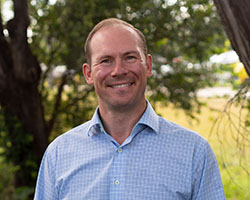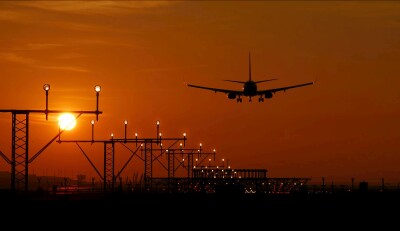For years, farmers relied on traditional methods like labor-intensive manual spraying, hired crop dusters or even agricultural aircraft to spray fields that were too large for manual labor. With the growth of the drone industry, the way farmers spray their fields could change drastically, as spraying with a drone provides improved benefits. Reduced labor costs and CapEx, reduced chemical exposure, better access to the field at various times during the growing season, and improved yields are some of those benefits.
Getting started with drone spraying
isn’t as simple as buying a drone fitted for the job. In each state, there could be special rules for anyone who wants to legally spray crops with a drone. This is something
Rantizo, a targeted drone sprayer company focused on solutions that directly address the field needs of farmers and agricultural businesses, is currently working on. The company has an open and ongoing dialogue with the pesticide licensing and application authorities in all 50 states.
In July 2019, Rantizo
became the first company in the state of Iowa approved for drone-based agricultural spraying. Earlier this month, the company expanded its Agricultural drone spraying approval into Wisconsin. More recently, Rantizo received the approval to expand the territory to include Illinois, Minnesota and Nebraska, meaning it now provides drone spraying solutions to the entire Midwest.

Michael Ott
To better understand why the company came up with
its solution, how it is making a difference, and more, we connected with CEO & Co-Founder, Michael Ott.
Commercial UAV News: How and why did you come up with the drone spraying solution?Michael Ott: I like efficiency. It seems wasteful to spray chemicals where they aren’t needed. Using drones gives us a way to apply quickly and easily just where things are needed. In addition, we can address the shortage of labor we are seeing in the agricultural industry. Soon there will be 9 billion people in the world but fewer and fewer are working in agriculture. We need ways to create more food with fewer workers, so we have to automate and use new technologies like drones.
We saw that agricultural spraying had seen very little evolution over the years and that most of the change was in chemicals and formulations, not how they were applied. Ingenuity on the application and spraying equipment side of ag, however, has been moving at a glacial speed for a long time. Ground equipment has continued to increase in size, which causes problems with soil compaction and crop damage, not to mention logistical and economical hurdles. Traditional airplane crop dusters are dangerous and have been known to cause huge problems when it comes to drift and overspray.
The most critical issue we address with drone spraying is field access. With label requirements and weather patterns, anyone needing their field sprayed is already limited on the number of days they are allowed to spray. Compound that with heavy equipment that can’t get into muddy fields without getting stuck or the challenge of getting on the job list to have a crop duster spray and the window becomes increasingly narrower.
Our drone-based spraying platform allows fields to be sprayed hours, not days, after rainfall which drastically improves the likelihood of success when it comes to yields. Additionally, with the nimbleness of our drone, a custom applicator is now able to reach more customers in less time with less headcount, improving profitability for their business as well.
According to CropLife's article you made your first drone sale in April 2019. Since then, you were approved for agricultural drone spraying in Iowa and recently expanded into Wisconsin. How hard was it to spread the word about your solution and convince professionals to use it? Quite honestly, it has not been that hard to spread the word. When we broke the news of our Iowa approval, it was picked up in just about every agricultural publication. From there, the phone hasn’t stopped ringing. People have been searching for a better way, and Rantizo can provide it. Even skeptics have heard about us and aren’t shy to spread the word after they see our drones in action.
What Rantizo is building will inherently have a slower adoption rate because we’re first and we’re different from the status quo. The technology we have now will continue to improve. Everything we are building is strategic and timely in our launch to ensure we truly are solving the most pressing problems.
Right now, our technology is being viewed as a great fit for smaller acreage operations, spot spraying opportunities, cover crop applications, and accessing hard to reach areas in or around fields mostly caused by terrain hurdles. We’ve had interest from wildflower seed producers, hemp growers, commodity growers, berry farmers, vineyards and others.
Was it complicated to obtain approval to perform this type of work legally? Complicated? Slightly. Time-consuming and relatively expensive? More so. We recognized that the technology we were building would require significant regulatory work. It was our intent from the get-go to be the pioneers in this space. We estimated one process to take 3 months and it took 6, which was not helped when the US government shut down in the middle.
Could you share a use case where your drone solution is clearly making a difference?One specific story to share would be that of our very first customer. The growers contacted us in need of a quick solution for a caterpillar infestation they had. Their fields were located too close to an airport so an airplane couldn’t be used. They had just experienced several weeks of continued rainfall so the fields were too muddy for a ground rig. The insecticide they had used in the past left their applicator’s lips feeling numb so none of their workers wanted to backpack spray it (and understandably so). Our drone sprayer was the only viable solution for their situation.
It’s really fun to see just how flexible our drone sprayer is. There are some overarching trends where our solution is being used, but since this technology is so new, we are creating different solutions for many different use cases. Any situation where a grower has been used to deciding to spray an entire field when they only in fact needed to spray targeted areas are making substantial differences for their input costs and profitability.
What are the company's plans for the future?Our near term priorities are to work on approval for swarming and then BVLOS exemptions from the FAA. With those granted, we can continue to change the game of agricultural spraying and the regulatory landscape would align with where our technology capabilities already exist.
Aside from the regulatory side of things, we are planning to continue to build and refine our technology. Electrostatics will be added to our drone sprayers soon, which will enhance the area we can cover per flight. We have several other advancements with our technology that we are currently either prototyping or testing that will be revealed once intellectual property protection is filed.
Currently we are selling these drones very quickly. Our plan is to eventually be a service-based business, but right now we are working to get as many drones out into the field and working as possible so we can provide services in all the places they are needed.
With the current regulation limiting drone gross weight to 55 pounds and fungicide label requirements of a minimum of two gal/acre, how will the drone be effective in a typical Iowa cornfield carrying only an acre or two of product at best and still remain within eyesight of the operator?That’s a great question and it requires a bit of a mind shift from how fungicides are applied currently. Rantizo can cover over 100 acres/day. With upgrades that should be available in a few months, it will be ~130-150 acres/day. When we can swarm with 3 or 5 drones, it will be ~400-600 acres/day. The small tank isn’t ideal, but we can adapt to that standard and still be able to cover a competitive amount of acreage. It’s important to us to stay below the regulatory threshold so that we can train anyone to use our products. The drone will end up making multiple trips, but that’s fine- it’s a drone that will do what you program it to.
Do you have any personal expectation for the drone industry in the Agriculture domain?In agriculture, you ultimately have to deliver materials, whether those are seeds, products, chemicals or anything else. Drones can now do that efficiently and affordably. We’ve already seen drones used heavily on the imagery and data gathering side of the business. Rantizo can integrate with those and be precise in applying the needed materials right where they are desired. From there, drones applications could do anything from cover crop seeding to beneficial insect releases, to agrochemical spraying. My expectation is that the perception of drones for agriculture will shift from the notion of toys to tools…I’m already seeing this.
Is there a piece of software, hardware, or even regulatory measures you think could help move the industry forward at a faster pace?Most definitely rural broadband. In order for technologies to work the way they are intended to, connectivity is key. I’ve already touched on swarming, which will be a game-changer.
















Comments